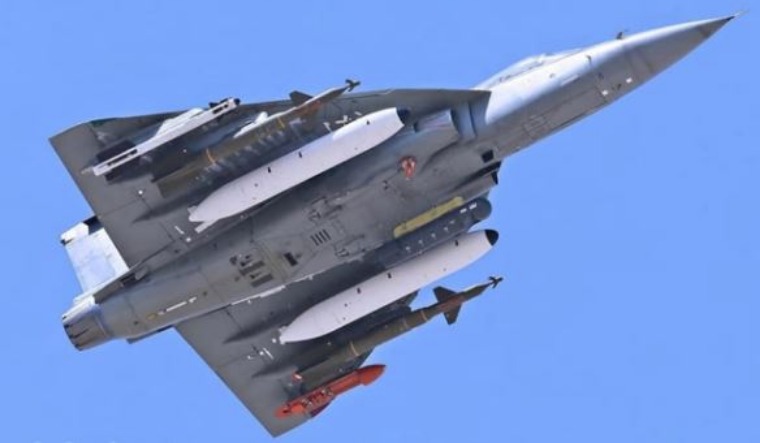On Tuesday, HAL announced that it had placed an order for 99 engines from GE Aviation in the US for the Tejas Mk1A fighters that will be built for the Indian Air Force.
R. Madhavan, the CMD of HAL, explained that the deal, valued at Rs 5,375 crore, for the F404 engines from GE was the "largest ever deal and the purchase order placed by HAL for LCA".
The latest deal is just an indicator of the sheer longevity of the F404 engine. The original F404 engine was selected by the US Navy in 1975 to power the F/A-18 Hornet (not to be confused with the F/A-18 E/F Super Hornet).
Since then, the F404 engine has powered at least 15 different combat aircraft and UAVs. These include the F-117 Nighthawk, which had two F404 engines. The F-117 was a ground-attack aircraft that is popularly called the first stealth fighter. The Swedish Air Force's Gripen fleet is powered by the RM12 engine, an adaptation of the F404.
The F404 even played a crucial role in developing the French Rafale fighter, considered the most advanced fighter in the Indian Air Force now. The first test flight of the Rafale in 1986 was flown with two F404 engines. The use of the F404 was necessitated by the fact that the French-built M88 engine was still in development when the Rafale prototype was ready for flight tests. The first M88 began flight tests in 1990 on a Rafale.
What explains the popularity of the F404?
GE has touted the F404 as being one of the first military engines developed with low maintenance costs in mind, with the aim to keep the overall operating cost of the aircraft low. The F404 had lesser thrust than the engines powering the F-15 and F-16 fighters, but was lighter in weight and had lower operating costs.
The stress on maintenance was prompted by the operating constraints on aircraft carriers, which were the primary operating base for the F-18 fighters. According to GE, the the six modules of the F404—fan, compressor, combustor, high-pressure turbine, low-pressure turbine and afterburner—are designed for convenient maintenance especially on an aircraft carrier, allowing engineers to quickly swap out a module for a spare.
The F404's modular structure made it easier to adapt to different aircraft requirements. It has been upgraded with a new full-authority digital engine control (FADEC) that controls all aspects of the engine and now can even monitor the powerplant's performance 'health'.
Multiple variants of the F404 have been developed for various aircraft. The version for the Tejas MK1A is called the F404-IN20 and is called the "highest-thrust" version of the engine. The Indian Air Force had originally planned to use the F404 to power the prototypes of the Tejas and use the indigenous Kaveri engine on production aircraft. However, the lack of progress on the Kaveri has led to continued reliance on the F404, which will power 123 Tejas fighters in total.
The F404 is being used to power the South Korean-built T-50 trainer and light-attack fighter. The F404 also powers the Boeing T-7A Red Hawk trainer jet, which was selected by the US Air Force in 2018 as its new advanced trainer. The US Air Force is expected to buy around 350 T-7A jets.
It is not just manned aircraft the F404 has powered. The engine was used to test the stealthy X-45C unmanned combat air vehicle, which was cancelled.
When the F404 GE-IN20 made its first flight on a Tejas in 2008, GE had claimed more than 4,000 F404 engines were in service worldwide. The orders for the Tejas, T-50 and T-7A mean the F404 would still be in production for at least another decade.




